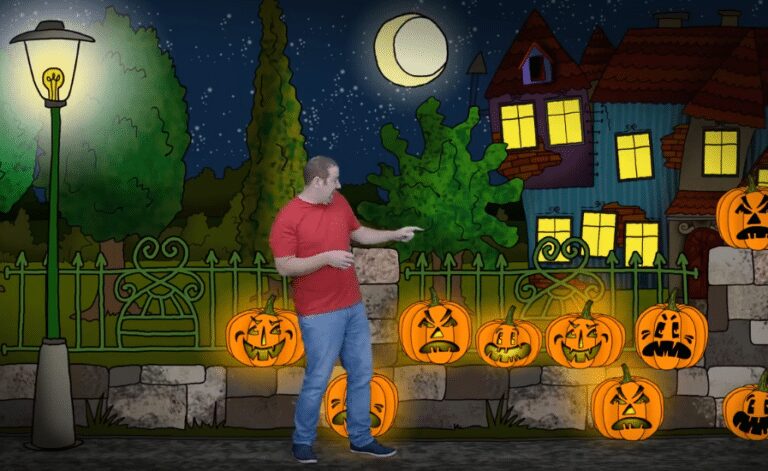3 Valentine’s Day ESL Activities

As an ESL teacher, you know how great it can be to have a holiday or event to rely on for themed classes. Valentine’s Day is another one of these great options because there are so many colorful activities that you can do without too much prep—and ones that you can be pretty sure most students will enjoy.
Here are a few solid recommendations to get started, so you can celebrate Valentine’s Day with your ESL students.
Download: This blog post is available as a convenient and portable PDF that you can take anywhere. Click here to get a copy. (Download)
How to Introduce Valentine’s Day
Depending on the culture and mother tongue of your students, Valentine’s Day may be a familiar holiday or may be a completely foreign concept.
Another possibility is that your students will have some familiarity with Valentine’s Day without knowing any of the Valentine’s Day traditions of the anglophone world. For these reasons, it is a great idea to introduce Valentine’s Day before getting started with any ESL activity.
Because you are likely (barring certain circumstances) to have at least one student who knows something about Valentine’s Day, we recommend relying on your class to get the conversation started. You can use any number of prompts to get students chatting about Valentine’s Day.
- Use a calendar and circle the date. Ask students if they know anything special about the date.
- Use visual prompts like clip art or photos relating to Valentine’s Day, anything from candy conversation hearts to Valentine’s Day cards to cupids, and ask students if they know what holiday they correspond to.
- Use a Valentine’s Day prop such as actual candies or cards. Pass them around and let students taste candies, read cards and interact however possible with the props.
- Use the trailer for the “Valentine’s Day” movie to get the conversation started.
- Ask students, “Do you know of a holiday that celebrates love?”
Choose a prompt that is appropriate for the language level and cultural knowledge of your class. Once they are talking about Valentine’s Day, it is easy to get them working on an activity.
Valentine’s Day ESL Activities
1. Making Valentine’s Day Cards
Arts and crafts activities are time-tested ways to keep beginners interested in new vocabulary, and what better activity for a Valentine’s Day lesson than making Valentine’s Day cards?
Note: You can always add a stronger element of more advanced writing to kick things up a notch for intermediate and advanced learners—these guys can even try using more poetic vocabulary, classic poetry formats and rhyming words. You could even have them practice past tense by writing to a (fictional) past romantic interest or the future romantic interest of their wildest dreams.
First, you’ll need to introduce a vocabulary lesson.
It might be fun to create a word search with words that you find appropriate for the level of your class. Here are a few key words to use:
- cupid
- bow and arrow
- heart
- love
- boyfriend/girlfriend
- husband/wife
- friendship
- friends
- candy/chocolates
This resource is also a great tool to add more words to the list for false beginners (who have had some past experience with English) and beginning intermediate classes for whom the words above might be too simple.
Whatever your final vocabulary list looks like, be sure to choose a quick activity that allows you to introduce between 10 and 15 words at the beginning of the lesson. Don’t dwell on it for too long, or you’ll risk not having enough time for the crafts activity.
Once you have introduced the vocabulary lesson, ask students to volunteer endings for the sentence, “I love…”. If you do not have anyone come forward with answers right away or if the activity appears to be going too far off-topic, you could include a few examples:
- my parents
- my dog
- my husband
- my daughter
Finally, show students a sample of the kind of card they could make, either by making a prototype yourself or showing images of some cards online. For this, Pinterest is a great resource. Give your students a few sample sentences that they could write inside the finished card:
- I love you!
- You’re beautiful.
- Happy Valentine’s Day!
You can also incite more sentence examples from your students, and encourage them to come up with their own.
The rest of the class should be dedicated to making Valentine’s Day cards using colored paper, stickers, markers, stencils and any other crafts materials you would like to offer. Keep students talking during the activity to make sure that they are still practicing their English while they partake in this activity.
2. Reading and Writing Valentine’s Day Poetry
One great way to introduce Valentine’s Day to your students is by doing a poetry lesson. This lesson type can be used with all levels, depending on the poem that you choose.
For absolute beginners and younger learners, try the classic, “Roses are red, violets are blue, sugar is sweet, and I love you.”
For more intermediate or advanced learners, here are some great love poems to choose from:
- “Sonnet 40,” William Shakespeare
- “Sonnet 65,” William Shakespeare
- “A Special World,” Sheelagh Lennon
- “Love Poem #3,” Courtney Kuchta
- “Annabel Lee,” Edgar Allen Poe
Beginner poetry lessons will be a bit different from intermediate or advanced lessons. For beginners, first look through the poem and make sure that all the vocabulary is understood and acquired. This can be done by providing an illustrated version of the poem or asking students to explain the meaning of certain keywords like the colors and the nouns used in the poem.
Be sure to introduce the concept of rhyming. Luckily, rhyming poems exist in many languages, so it is likely that you will be able to explain this concept without too much difficulty, even to beginners.
Next, show a few different versions of this poem. Depending on your students’ level, you might choose funny versions or just other loving versions.
Once you have presented a few options, encourage your students to write their own “roses are red” poems. This will encourage them to come up with rhymes in English. Depending on the level of your students, you may want to brainstorm rhyming words with them before they begin their poems, or you may allow them to work in pairs to do all this.
With any level of students, this activity can be used alongside the card-making activity, and the final poem written by the students can be printed inside the card.
For your intermediate and advanced students, it may be more interesting to take poetry to the next level by including a bit of literary analysis.
3. Researching the Holiday
Advanced students often have the wherewithal to complete independent research projects, and it could be interesting to ask them to delve into the history and the traditions of Valentine’s Day in honor of the holiday.
With this activity, you have two choices: You could either ask students to write a research paper (a page or two should be enough, even for advanced students!) in which case you can ask them all the same question.
The other possibility is to ask students to present their findings to the class via oral presentation, either alone or in pairs, in which case you will want to assign a different topic to each student or group.
Choose whichever structure works best for your class and the skills you are trying to develop with your students, be they related to written or oral expression. Whichever option you select, here are a few interesting ideas to get you started on research topics:
- How did Valentine’s Day grow to be celebrated as it is today?
- Who was Saint Valentine?
- What are some different Valentine’s Day traditions from around the world?
- What is the history of Valentine’s Day conversation hearts?
As always, it’s a great idea to encourage your students to come up with their own ideas as well, so feel free to let them choose their own topic if they come up with one that interests them more.
These tasks will help your students understand a little more about Valentine’s Day, and give you an opportunity to teach them some new vocabulary and facts.
Download: This blog post is available as a convenient and portable PDF that you can take anywhere. Click here to get a copy. (Download)







